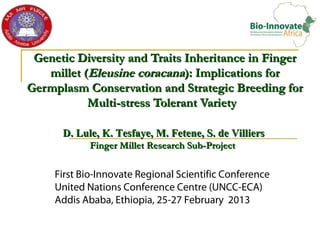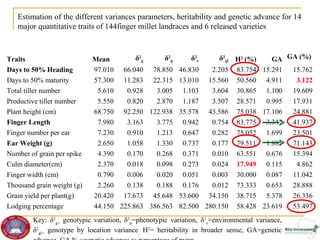The document discusses the genetic diversity and inheritance of traits in finger millet (Eleusine coracana), highlighting its importance as a food security crop amid biotic and abiotic stresses. It outlines research objectives focused on assessing genetic diversity in germplasm, genetic parameters, and breeding strategies for stress tolerance, utilizing various regions and methods for collection and analysis. Results indicate significant genetic variation among accessions, which is crucial for breeding programs targeting multi-stress resilience.



























